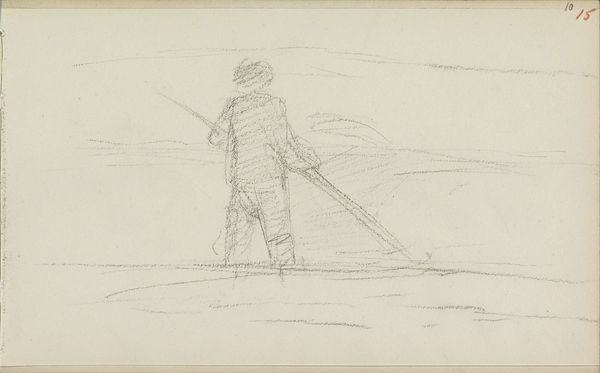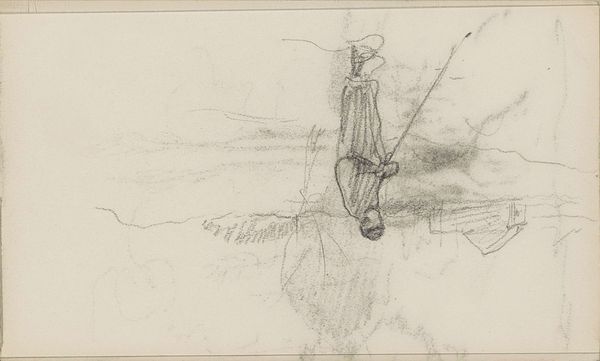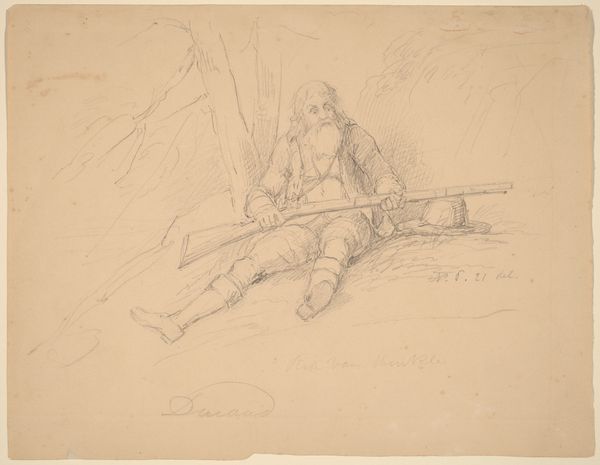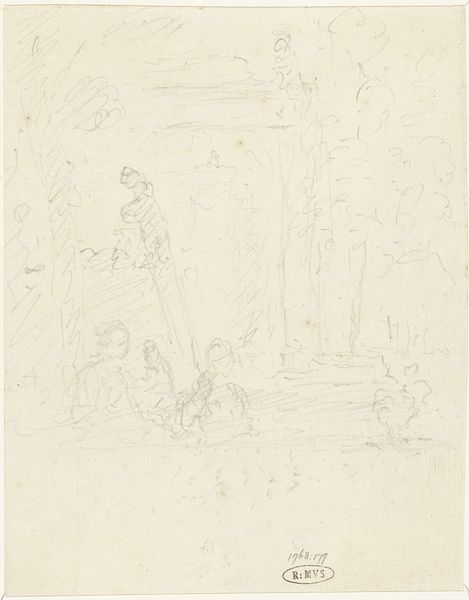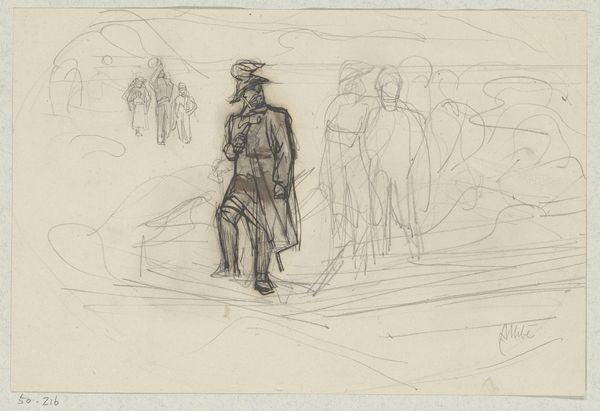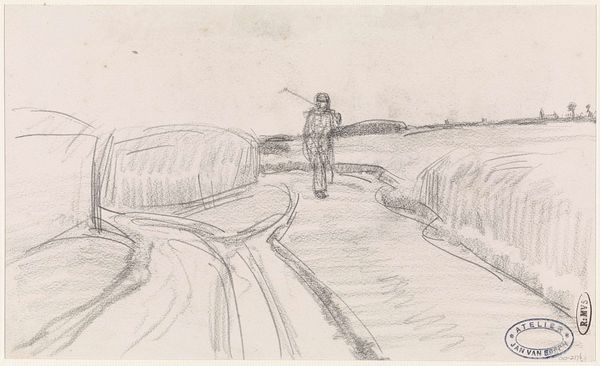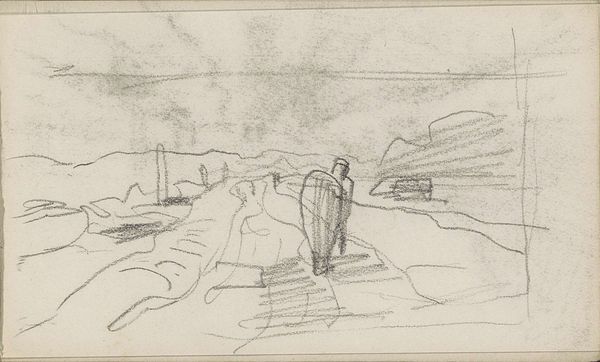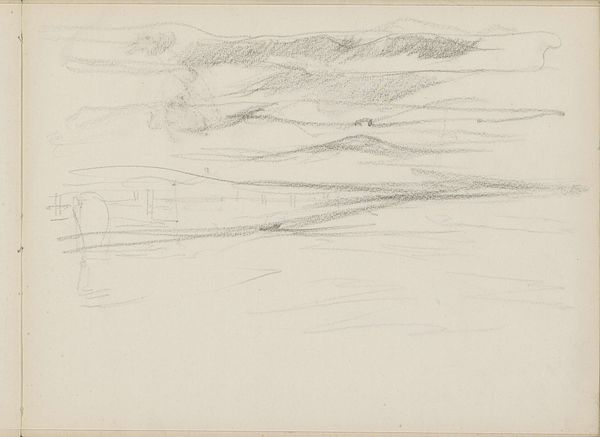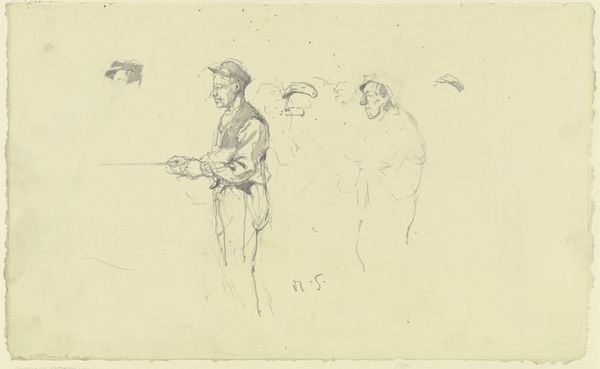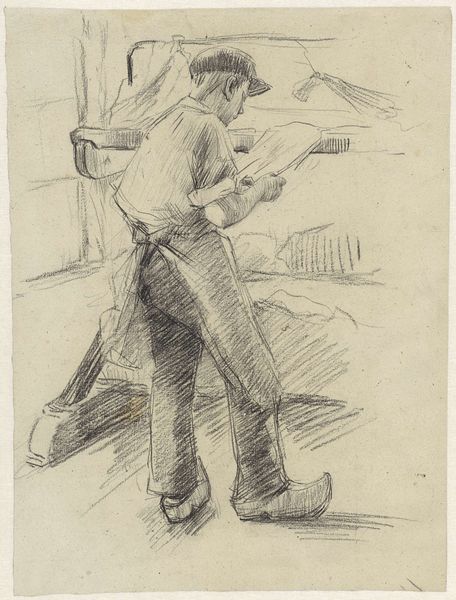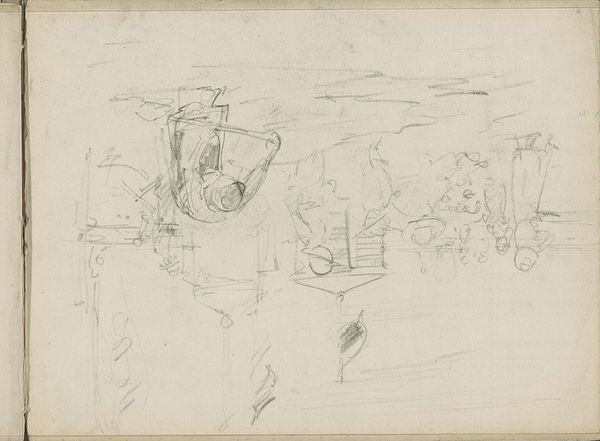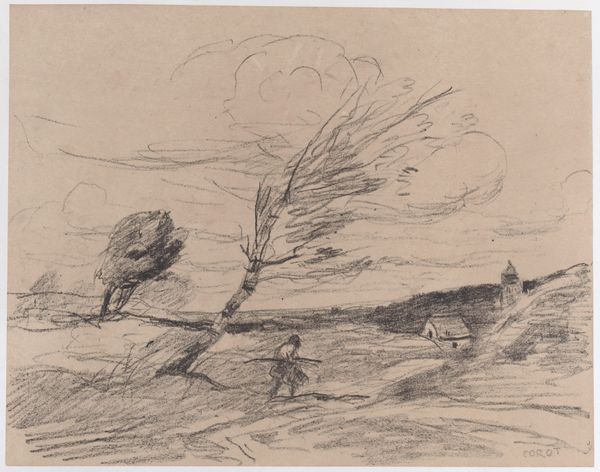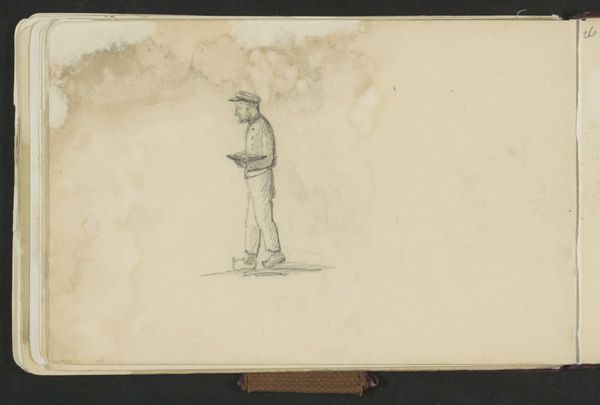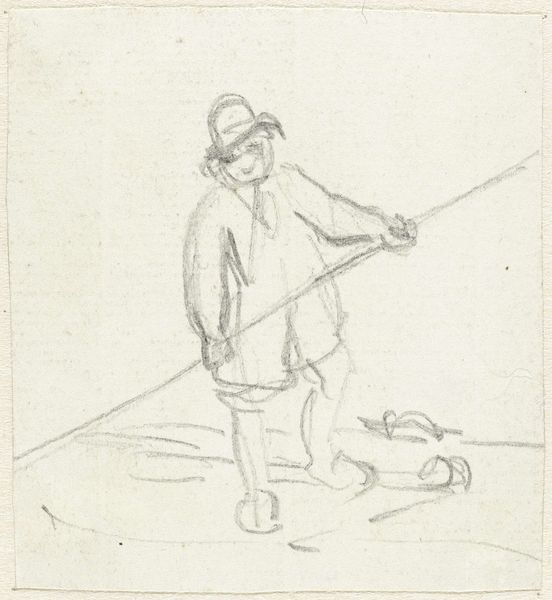
drawing, pencil
#
portrait
#
drawing
#
landscape
#
pencil
#
realism
Copyright: Rijks Museum: Open Domain
Curator: This evocative sketch is by Jozef Israëls, dating to sometime between 1834 and 1911. It’s titled "Schelpenvisser of een landarbeider" which translates to "Shell Fisherman or a Farm Worker" and is part of the Rijksmuseum collection. The piece is a pencil drawing, executed with remarkable economy. Editor: It certainly is spare. My immediate feeling is one of quiet loneliness, almost melancholic. The figure, rendered so simply, seems very solitary against that blurred background. What draws you to it? Curator: Beyond its technical skill, the piece touches on prevalent themes in 19th-century Dutch art - particularly an interest in portraying rural labor and everyday life with dignity, a nod to realism's commitment to subject matter. Jozef Israëls was a leading figure of the Hague School, a group keen to reflect the ordinary in all its humanness. Editor: Yes, and there's a visual symbolism here. His turned back, his implements – they suggest back-breaking labor, almost Sisyphean in nature. The man’s position in the landscape – dwarfed, indistinct - carries echoes of other symbolic images of peasants in art. But is there a subtle difference in his art and others during the industrialisation? Curator: Exactly, these works frequently took center stage amidst burgeoning social changes brought on by urbanization and the decline of traditional rural life, the rural worker became imbued with a sort of cultural weight—representing an idyllic, simpler time which resonated with both urban and rural audiences. These idealized rural scenes served both a nostalgic and perhaps critical function to their new reality, while simultaneously shaping perspectives. Editor: So, by depicting a rural scene, Israëls taps into deep-seated emotions around labor, class, and what was perceived as a disappearing way of life. His sketch prompts us to think about our cultural values around manual labor and the land. Even with limited strokes he invites viewers to feel deep resonance and shared memory that transcends his time. Curator: That's perfectly put. I find this small work serves as a stark and beautiful reminder of the value we place on rurality, poverty, the representation of labor, then and now. Editor: It gives such an enduring weight for a quick, small pencil drawing. Thanks!
Comments
No comments
Be the first to comment and join the conversation on the ultimate creative platform.
